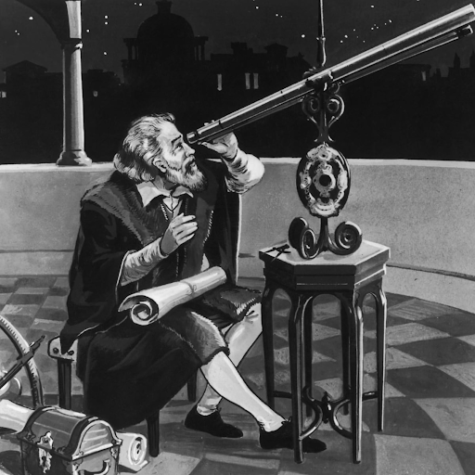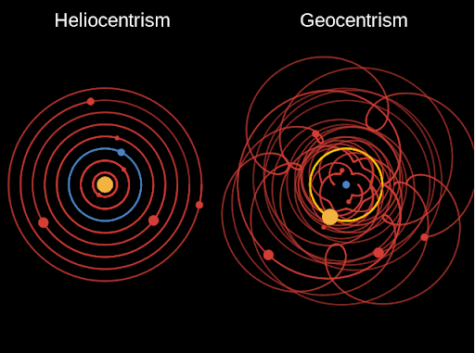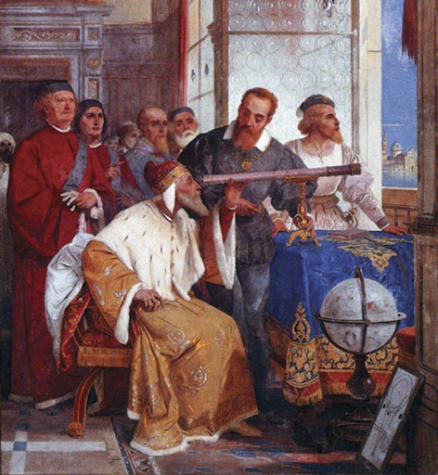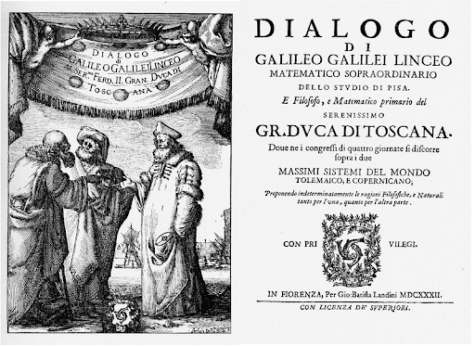When the Earth was the Center of the Universe

(Photo Source: Pixabay)
November 21, 2022
Many moons ago, people believed that the Earth was the center of the Universe. Early scientists believed that what appeared to be the celestial movement of the sun and other bodies around Earth truly occurred. This idea persisted for nearly 1,500 years. While the geocentric model, as it is called, may have been able to explain some observations of the cosmos and reinforce religious beliefs of the time, later astronomers, Nicolaus Copernicus and Galileo Galilei, disputed this widely accepted fact of life, bringing humanity to understand the truth about planetary orbits and revolutions.

Origins
According to NASA, around 380 B.C., Eudoxus, an ancient Greek astronomer, was the first to create a geocentric model of the Universe. His model could be described as a series of cosmic spheres built around the Earth, containing the stars, sun, moon, and planets.
This model was supported due to its conformation with religion at the time, as it was common for many, including Greek philosophers and astronomers, to believe that a God or Gods created humanity as well as the heavens. Therefore, because of this divinity, humans must have been at the center of everything.
Unfortunately for Eudoxus and the Greeks, as the exploration of the motion of celestial bodies progressed, it became more and more clear that Earth-centered models of the Universe could not effectively foretell the paths and motions of planets in the solar system.
The initial turning point for heliocentric, sun-centered, acceptance was in 1610 when Galileo noticed something through his telescope.

(Photo Source: Hulton Archive/Getty Images)
He made countless discoveries, though two, in particular, were fundamental to revealing the sun-centered solar system. Galileo first saw moons orbiting around Jupiter, proving Earth was not the only object that could be orbited. He then observed that similar to Earth’s moon, the planet Venus has phases, providing extended confirmation of planetary orbit around the sun.
However, ancient societies were obsessed with the concept that a God must have placed humans at the center of the Universe, given the belief that humans were, of course, God’s greatest and soul creation.

Science vs Religion
The Catholic Church classified heliocentricity as heresy, warning Galileo to abandon his discoveries.
An article from UCLA Newsroom states, “When first summoned by the Roman Inquisition in 1616, Galileo was not questioned but merely warned not to espouse heliocentrism. Also in 1616, the church banned Nicholas Copernicus’ book ‘On the Revolutions of the Celestial Spheres,’ published in 1543, which contained the theory that the earth revolved around the sun. After a few minor edits, making sure that the sun theory was presented as purely hypothetical, it was allowed again in 1620 with the blessing of the church.”
Until a new pope was elected in 1623, Galileo maintained his silence. This new pope, Urban VIII, greatly admired Galileo. Galileo eventually began to look deeply and critically at each and every scientific and philosophical argument for and against geocentricity. Following his publication of the Dialogue on the Two Chief World Systems, Ptolemaic and Copernican, evidence in favor of Copernicus’ original theory ended up being stronger than previous, traditional concepts. While not yet conclusive of heliocentrism, Galileo’s research provided that the motion of the Earth was very possible and more likely than a stationary Earth.

The Church charged Galileo with “suspected heresy.” Fortunately, this was not as serious as “formal heresy” and therefore his punishment was not death…just house arrest and the banning of the Dialogue.

The controversial relationship between science and religion was sparked by the Church’s condemnation of Copernicanism and Galileo.
It took almost a century for the new heliocentric model to be accepted after it was first proposed by Copernicus. Eventually, scientists couldn’t reject it anymore due to the mounting scientific evidence in support of heliocentrism. The new sun-centered model fundamentally changed our view of the Universe and continues to aid our understanding of solar systems beyond our own.
Perspective
When gazing into the night sky from where we are, it seems like we are the fixed point and all the stars and planets revolve around us. It wasn’t far-fetched for so many people to believe this a long time ago.

Imagine a time when almost everyone around you believed in geocentricity; it was considered a fact that everything revolved around Earth. Being taught this from childhood, it is the only perspective you have ever known. It would seem absurd that there could possibly be another perspective.
Yet, the Earth does, in fact, revolve around the sun. The Earth is not the center of the Universe, as it may appear from one perspective which happens to be our own.

In essence, life is all about perspective. Your life is only your own since you are the one experiencing it, you can only really know your own perspective. The key to understanding the truth? Observe from various perspectives, even the ones we approach with skepticism. Otherwise, we may never know what we don’t seek to know.

chris parker • Apr 14, 2023 at 12:44 am
Dude seriously: Where have you been? The “axis of evil” is a name given to the apparent correlation between the plane of the Solar System and aspects of the cosmic microwave background (CMB). It gives the plane of the Solar System and hence the location of Earth a greater significance than might be expected by chance – a result which has been claimed to be evidence of a departure from the Copernican principle as assumed in the concordance model. Wikipedia
Lawrence Krauss is quoted as follows in a 2006 Edge.org article:
‘The new results are either telling us that all of science is wrong and we’re the center of the universe, or maybe the data is simply incorrect, or maybe it’s telling us there’s something weird about the microwave background results and that maybe, maybe there’s something wrong with our theories on the larger scales.”
Data from the Planck Telescope published in 2013 has since found stronger evidence for the anisotropy.
Data from every probe to date his confirmed this “anomaly”.
Justin Doucette • Nov 22, 2022 at 7:41 am
This is a great article. I really like how you go over the thought processes of people around this time, and really dive into the importance of perspective.